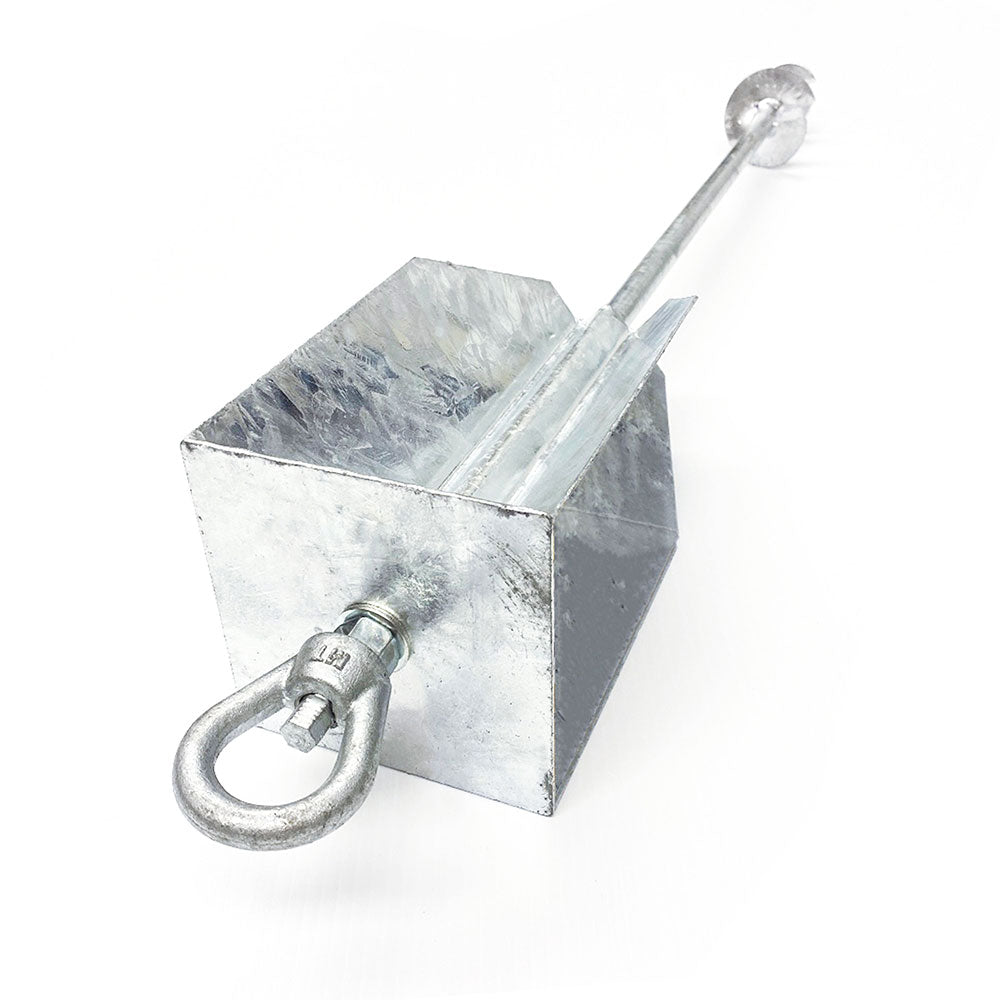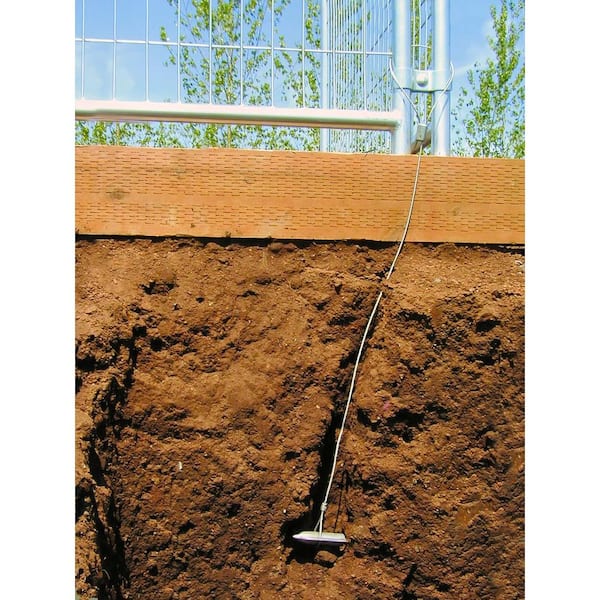How to Choose the Best Ground Anchor for Outdoor Use
Discover the Different Kinds Of Ground Support for Your Following Task
When starting a construction or landscape design project, understanding the numerous sorts of ground supports available is critical to making certain both security and durability (Ground Anchor). From auger supports, which master varied soil conditions, to stake anchors created for short-term installments, the alternatives are many. Additionally, concrete and screw supports present unique advantages in particular situations, while deadman anchors are customized for applications needing resistance to side pressures. The choice of a proper support type can considerably influence the total success of your job, prompting more expedition into their particular benefits and applications.

Auger Anchors
Auger supports are a popular option in numerous building and construction and landscaping projects as a result of their one-of-a-kind design and effective securing capabilities. These anchors include a helical screw-like shaft that is driven right into the ground, enabling for a secure and stable hold. The spiral design assists in very easy installation and maximizes resistance against lateral pressures, making auger anchors especially reliable in applications such as fencing, momentary frameworks, and disintegration control.
The installation process of auger anchors is fairly uncomplicated. Auger anchors can be easily removed and reused, which adds to their cost-effectiveness and sustainability.
One of the substantial advantages of auger anchors is their capability to distribute lots uniformly throughout the surrounding soil, minimizing the risk of soil disruption and minimizing environmental effect. Additionally, they are much less at risk to loosening up or heaving gradually compared to conventional securing approaches. Auger anchors are an exceptional selection for tasks calling for trustworthy and durable anchoring services.

Stake Anchors
When it comes to safeguarding structures in a selection of outdoor applications, stake anchors use a dependable and uncomplicated remedy. These supports are usually constructed from long lasting products such as steel or light weight aluminum, made to endure environmental anxieties while providing ideal stability. Their basic layout enables quick installation, making them an ideal choice for momentary or long-term anchoring requirements.
Stake supports are particularly beneficial in safeguarding outdoors tents, covers, and other light-weight frameworks against wind and weather. They work by being driven right into the ground at an angle, creating a solid hold that stands up to pull-out pressures - Ground Anchor. The performance of stake anchors depends on several factors, including dirt type, dampness web content, and the angle of installation
For included safety, several stake supports include accessory points for ropes or straps, permitting tension adjustments as necessary. In applications such as landscape design or building, they can efficiently maintain tools or structures on irregular surface. On the whole, risk anchors provide a cost-efficient and flexible solution for securing different exterior installations, making them a recommended option for specialists and DIY fanatics alike.
Concrete Anchors
Concrete anchors offer a durable service for protecting frameworks to concrete surface areas, making sure security and security in different applications. These anchors are essential for jobs ranging from residential constructions to large industrial setups. They are available in various kinds, including development supports, glue supports, and undercut supports, each designed for particular tons requirements and ecological conditions.
Growth anchors count on mechanical systems to grip the concrete when mounted. They are suitable for medium to sturdy applications. Glue anchors make use of high-strength epoxy or resin to bond the support to the concrete, using premium load-bearing abilities, especially in fractured concrete circumstances. Undercut anchors produce an one-of-a-kind shape within the concrete, giving outstanding holding power, specifically in applications where tensile loads prevail.
When implemented correctly, concrete supports considerably boost the structural honesty of different projects, making them crucial in contemporary construction methods. Understanding the certain needs of your task will certainly help in selecting the right type of concrete anchor for the job.
Screw Anchors

Screw anchors are a flexible securing option that can be properly used in a selection of applications where conventional concrete supports may not be enough. These anchors are composed of a helical design that permits them to be quickly driven right into the ground, making them suitable for usage in soil and other substrates. Their distinct framework supplies superb holding power and resistance to pull-out pressures, making them suitable for countless tasks, from landscape design to architectural support.
Among the primary benefits of screw supports is their simplicity of installment. They require very little equipment and can typically be set up without the demand for excavation, which saves both time and labor expenses. Additionally, screw supports can be eliminated and recycled, supplying a sustainable solution for short-lived applications.
Screw supports are specifically valuable in areas where dirt conditions are challenging, such as loosened or sandy soils. Their ability to be set up at varying depths enables customization based upon specific project requirements. On the whole, screw anchors give a effective and dependable securing method, making them read what he said a superb choice for professionals and engineers seeking reliable solutions for their projects.
Deadman Anchors
Deadman anchors function as a robust solution for supporting frameworks in tough conditions, especially where typical securing approaches might fail. These supports contain large, hefty things hidden underground, which produce resistance versus lateral forces. The layout usually includes a straight part, such as a block of concrete or a metal plate, buried in the soil, to which straps or cables are affixed.
The efficiency of deadman anchors hinges on their capacity to distribute loads over a bigger location, lowering the threat of failure in unpredictable soil conditions. They are especially advantageous in applications such as keeping wall surfaces, short-term frameworks, and incline stablizing, where dirt motion can compromise the stability of the structure.
Installment of deadman supports calls wikipedia reference for mindful planning to guarantee they are placed at the proper depth and positioning, optimizing their load-bearing capability. While they might require even more labor and material than light-weight supports, their reliability in adverse problems makes them invaluable for long-term tasks. In addition, deadman supports are flexible and can be adapted to numerous applications, making them a go-to selection for designers facing distinct difficulties in their projects.
Final Thought
In recap, selecting the appropriate sort of ground support is crucial for guaranteeing stability and safety in various jobs. Auger supports master diverse soil problems, while stake anchors suit short-term applications. For concrete surfaces, expansion and glue supports provide reliable options, and screw anchors use versatility in tough surfaces. Deadman anchors are particularly reliable in withstanding side forces for maintaining wall surfaces. Mindful consideration of these options will certainly improve job results and structural honesty.
In addition, concrete and screw supports existing special benefits in specific situations, while deadman supports are customized for applications calling for resistance to lateral forces - Ground Anchor.Auger anchors are a prominent choice in numerous construction and landscape design projects due to their unique design and effective anchoring capabilities. They come in different types, including expansion anchors, sticky anchors, and undercut anchors, each made for specific load demands and ecological conditions
Adhesive anchors use high-strength epoxy or resin to bond the anchor to the concrete, providing remarkable load-bearing capabilities, specifically in fractured concrete circumstances. On the whole, screw anchors supply a efficient and trustworthy securing technique, making them an exceptional choice for specialists and engineers seeking effective article source remedies for their tasks.